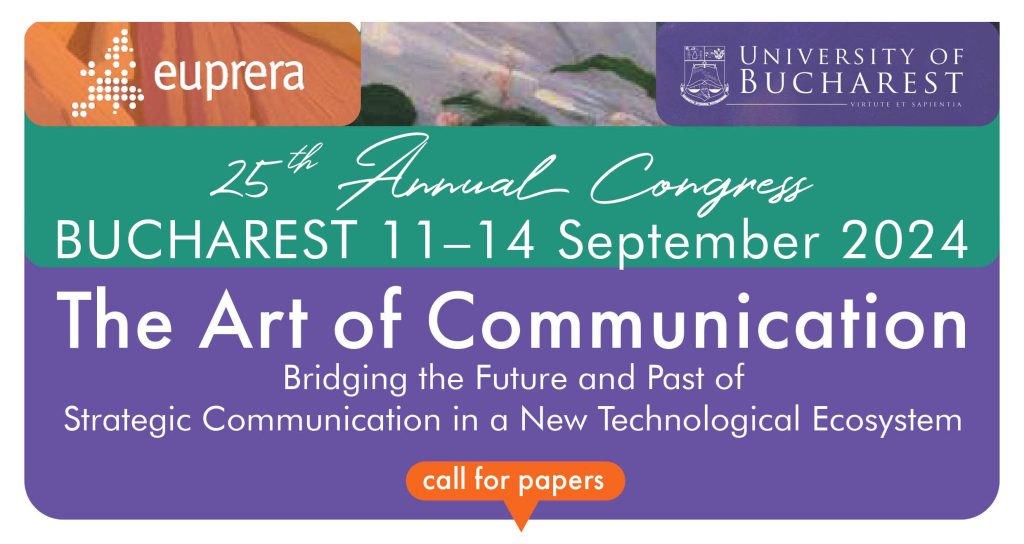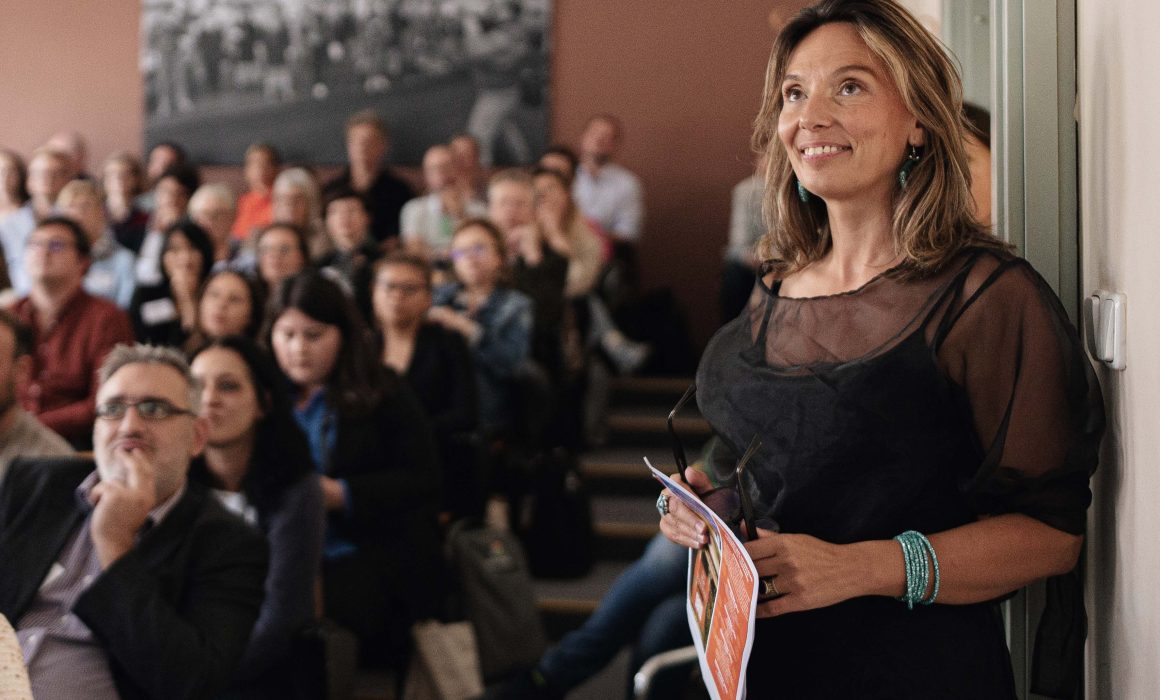The Art of Communication: Decoding the Future of PR in a World of Accelerated Changes
by Prof. habil. dr. Alexandra Crăciun
University of Bucharest
Let’s talk about the XXVth EUPRERA Congress, 11-14th September 2024, University of Bucharest, Romania
2024 is coming with a highlight. After 15 years, the EUPRERA Congress comes back to Bucharest, one of the largest cities in Europe, founded – according to the legend – by a shepherd named Bucur, whose name literally means “joy”.
The theme of the congress, “The Art of Communication. Bridging the Future and Past of Strategic Communication in a New Technological Ecosystem”, questions the status quo of public relations in a post-pandemic world, undergoing accelerated changes.
AI takeovers, neural interfaces, wearable computers, genetic engineering and body (re)construction are currently promising an alternative “afterlife”. The so called “technological singularity” – the moment when human and computer intelligence will merge, generating uncontrollable and irreversible transformations, is “scheduled” for 2045 according to the futurologist Ray Kurzwei, while in 2029 it seems that AI will surpass human intelligence (Kurzweil, 2005). While NFTs, VR, AR are now recurrent notions used in the field of strategic communication, metaverse, blended identities and hybrid spaces create alternative playfields for organizations.
Are public relations professionals and researchers ready now to reconsider their tools, practices and approaches fast enough to cope with all these changes?
Is the “art of communication” still able to provide an appropriate ecosystem for stakeholders facing new types of interactions?
Is there still a place for creativity, feelings and empathy while talking about technological takeover?
Recently, an article titled “Better than real men: Young Chinese women turn to AI boyfriends” published by The Japan Times featured an app called “Glow”, created by a Shanghai start-up, that provides “friendly — even romantic — human-robot relations”. The AI boyfriend has everything one could ask for: “he’s kind, empathetic, and sometimes can talk for hours” – a young woman confesses, proving a clear preference for the machine against a human partner.
“Aitana, 25, a pink-haired woman from Barcelona, receives weekly private messages from celebrities asking her out. But this model is not real.” writes Euronews. Earning up to €10,000 per month, she has more than 121,000 followers on Instagram, but only extremely few of them realize that she is only a fake.
Pygmanlion’s story seems to be more current than ever.
While the deepfake market is estimated to reach 30.5 billion by 2030, “Not Just A Cadbury Ad” is an award winning campaign that encourages people to support local Indian businesses, allowing entrepreneurs to manipulate a fake image of the Indian actor Shah Rukh Khan, to promote their own small businesses. Similarly, for a social campaign developed in the UK, a deepfake David Beckham speaks nine languages to support the fight against malaria.
The use of deepfakes for rescaling campaigns at lower costs is only the bright side of a transhuman paradigm in which identity has to be validated through blockchains.
Creating images, like Pygmalion, we are heading towards an unexplored territory that reminds us of Plato’s cave, a world of shadows and simulacra. A territory where art has no place because, through mimesis, art provides only a second-hand copy that deepens the counterfeit of the truth.
Can there be a better place than Romania, the country of the founder of modern art, Constantin Brâncuși, the sculptor that refutes mimesis to question the “art of communication” in an age where Artificial Generative Intelligence seems to expel man from the centre of the universe?
Can there be a better moment then 2024, when we are talking about “decelerating hype-cycles” and “Luddite modes” promoting life-styles based on self-liberation from social media and technology, to strive against anxiety, stress and deception?
Is the “art of communication” the way out of a saturated ecosystem where people believe stress, depression, and pollution are the top three challenges for human health” (Future 100, 2024)?
As Brâncuși said: “Simplicity is complexity resolved”.
So, let’s meet in Bucharest to answer complex questions, to decode the future of public relations in a world of accelerated changes, to find out how “art and communication” can provide new forms of “resilience” in a world that experienced lockdown and war.
So, mind the dates! We are looking forward to receiving your proposals for the XXVth EUPRERA Congress by March 15th and to meeting you in the joyful city of Bucharest, from 11th to 14th of September!

 info@euprera.org
info@euprera.org
 Facebook
Facebook YouTube
YouTube

